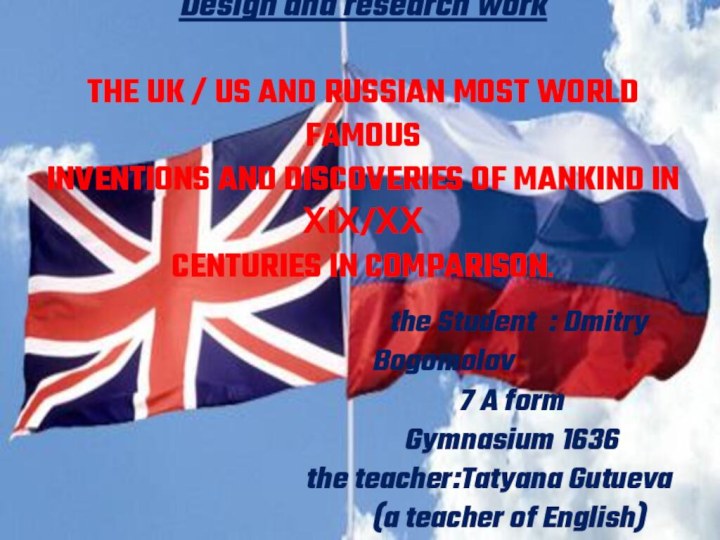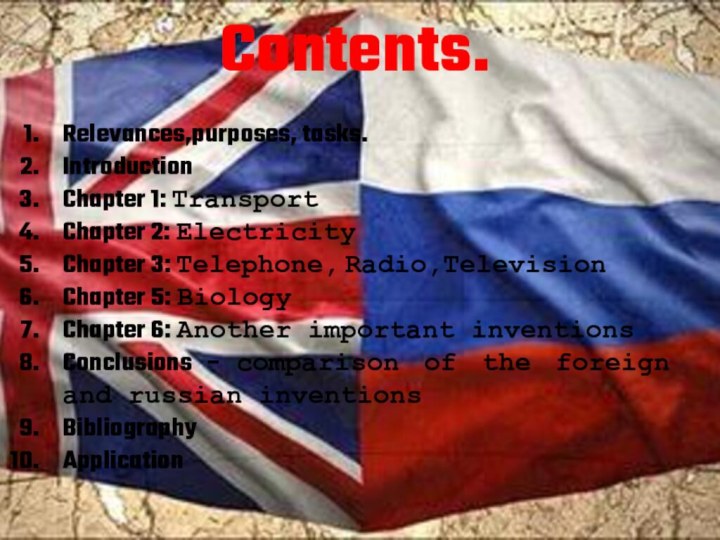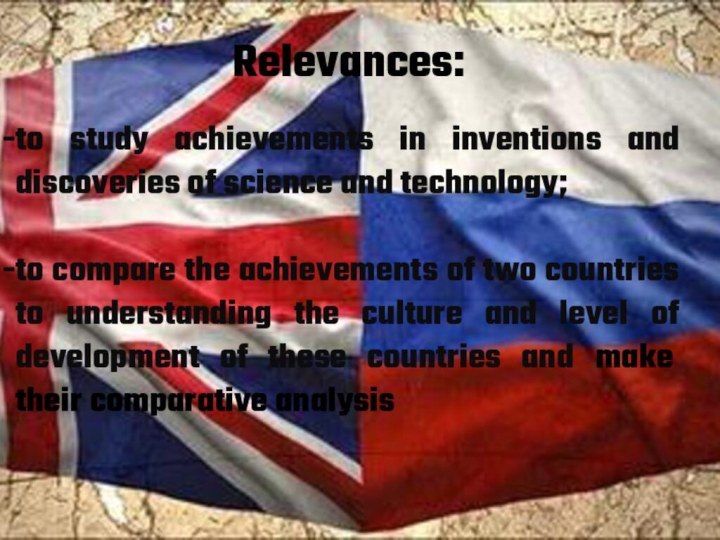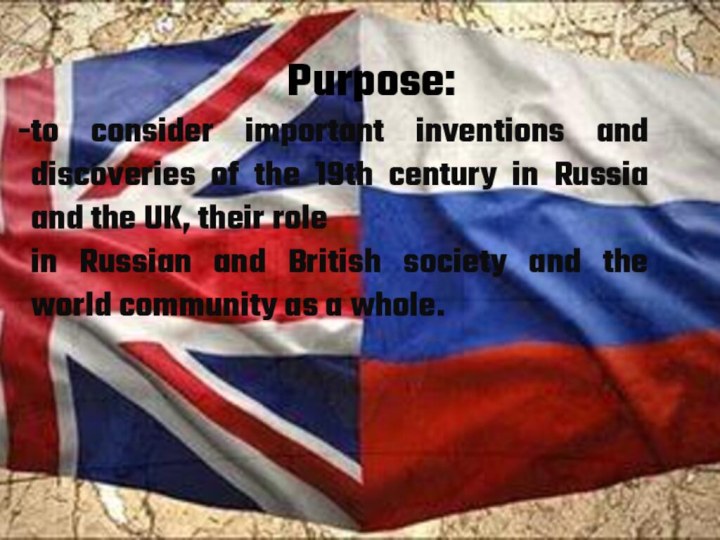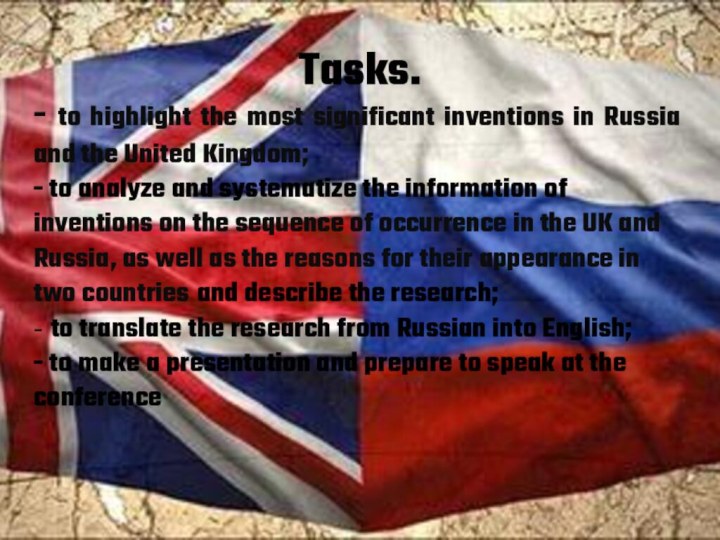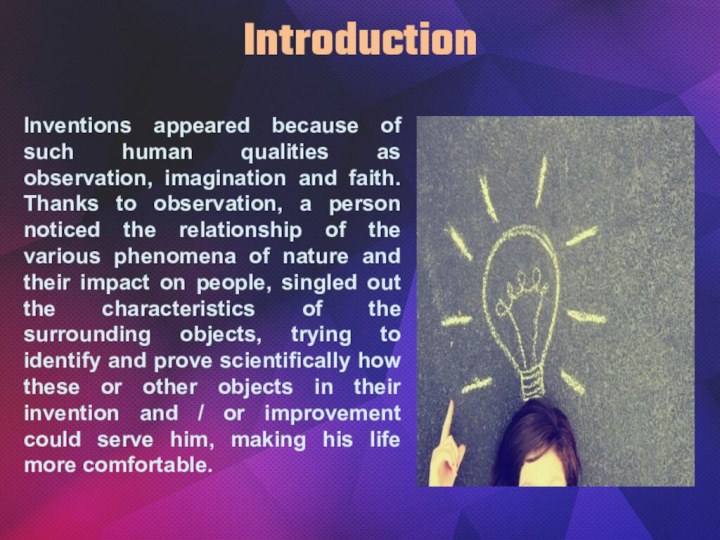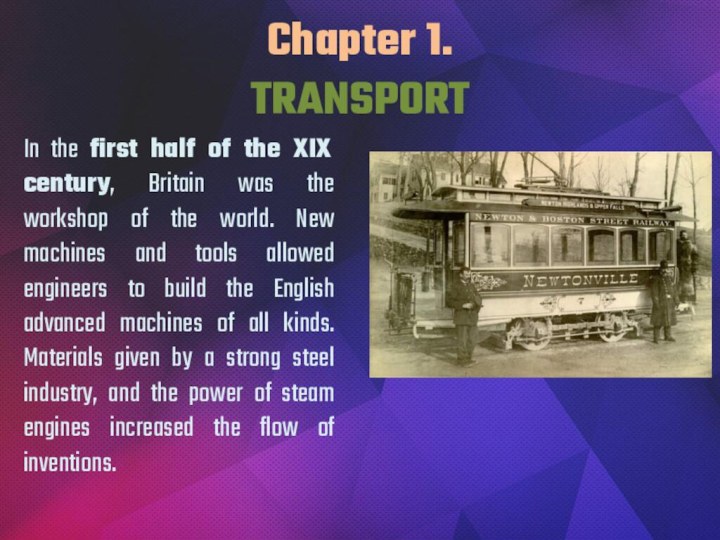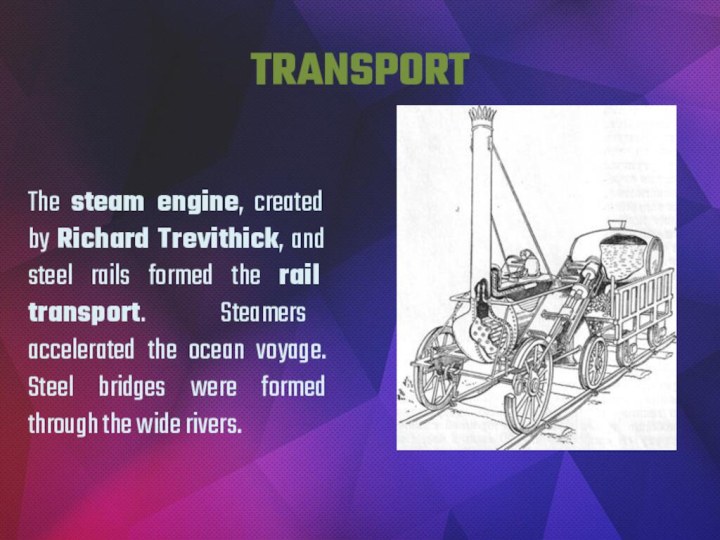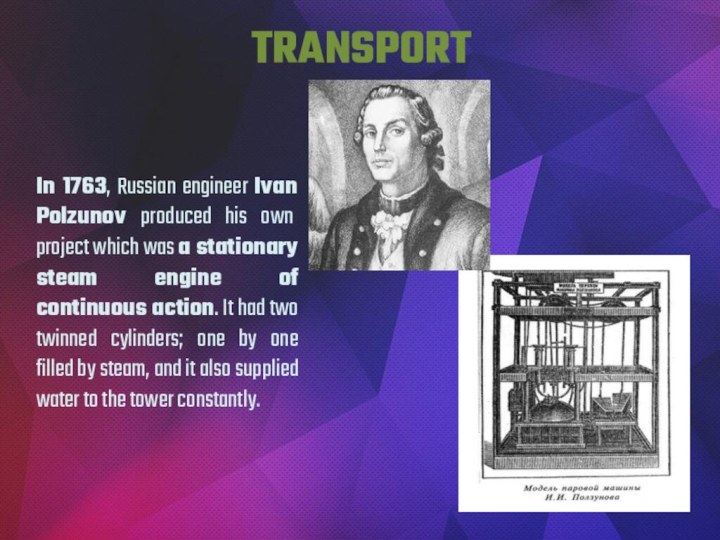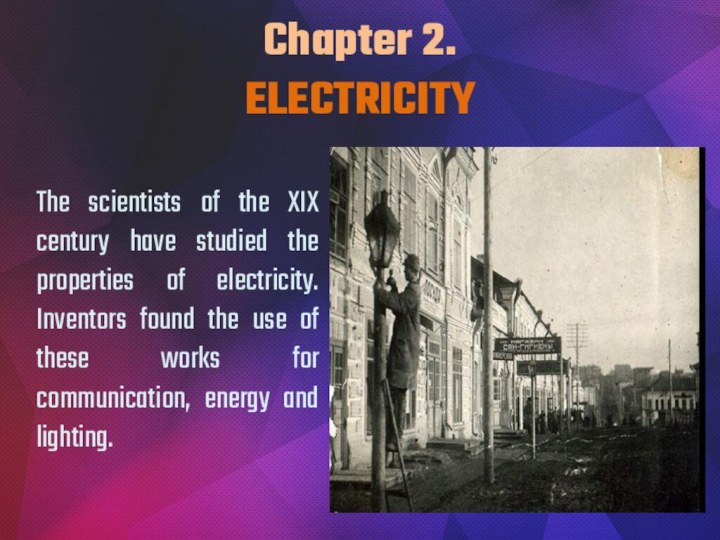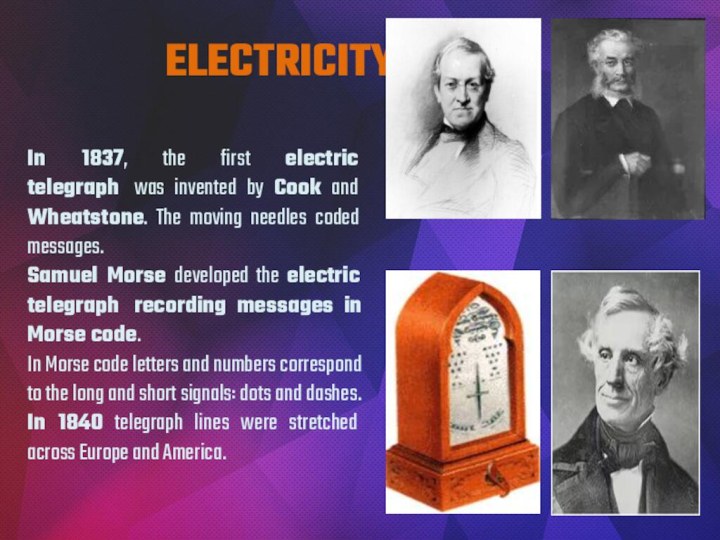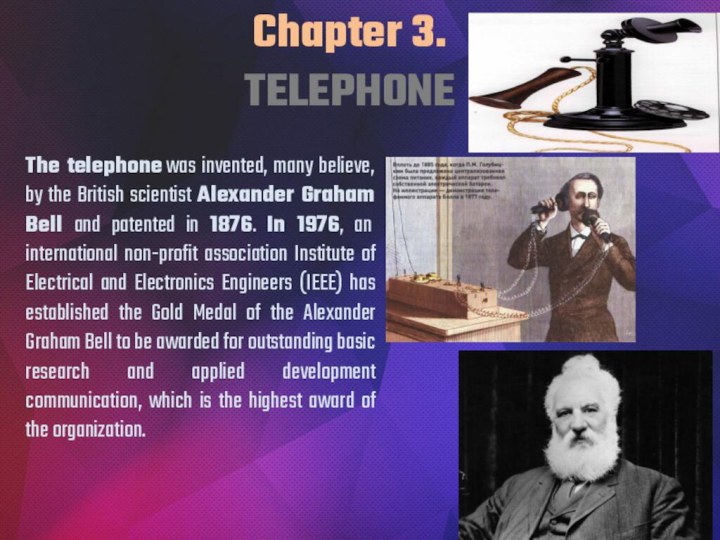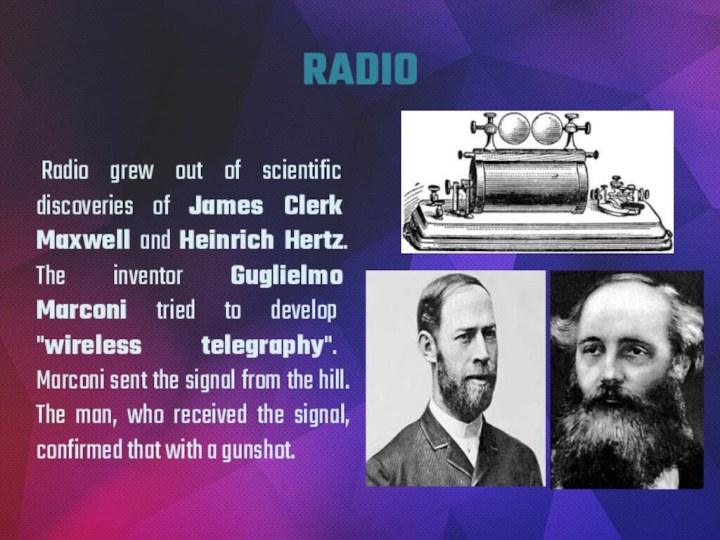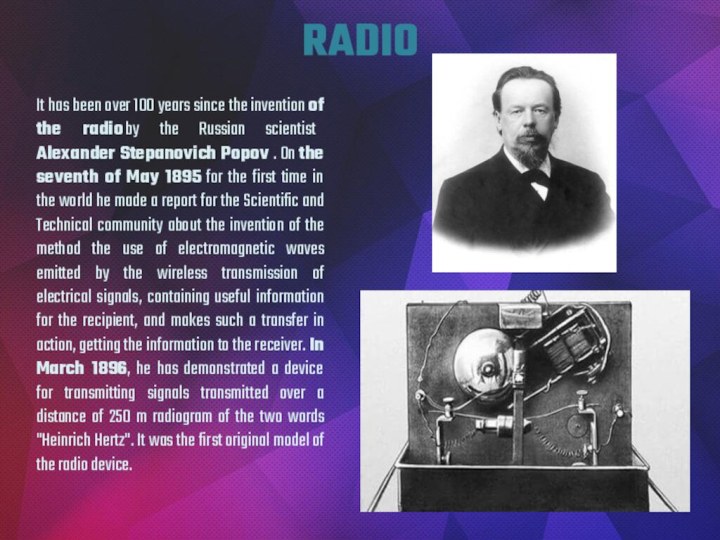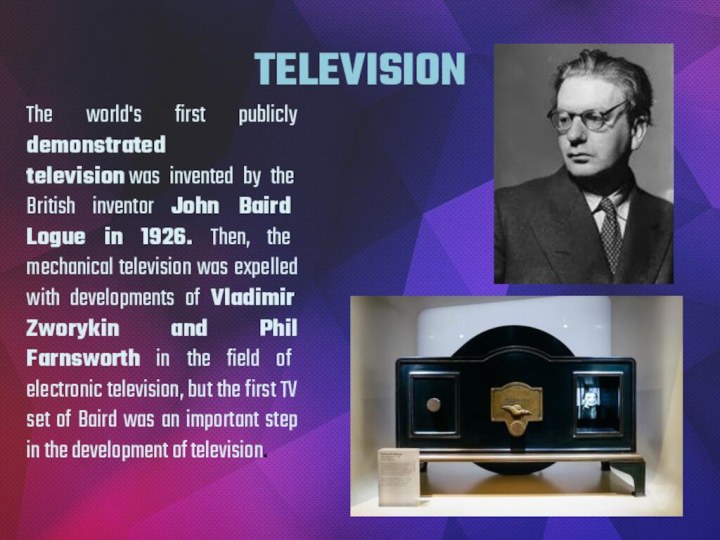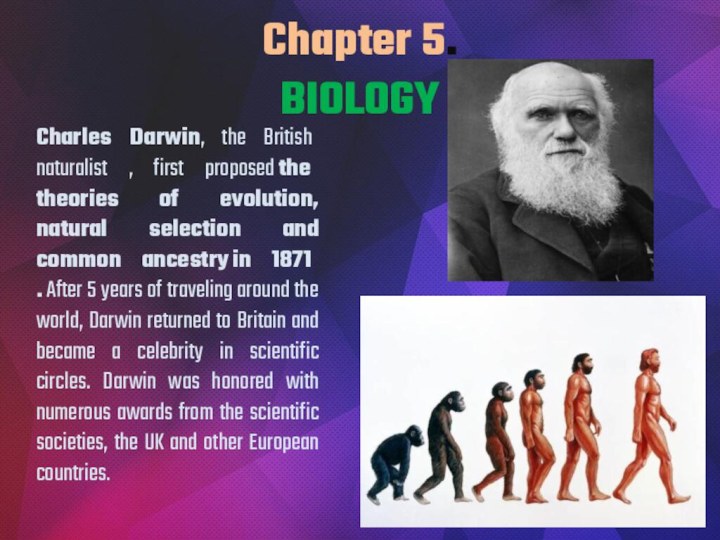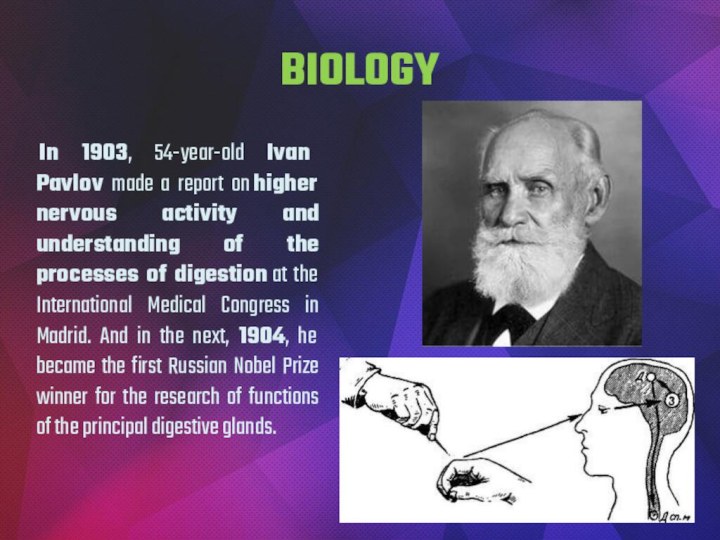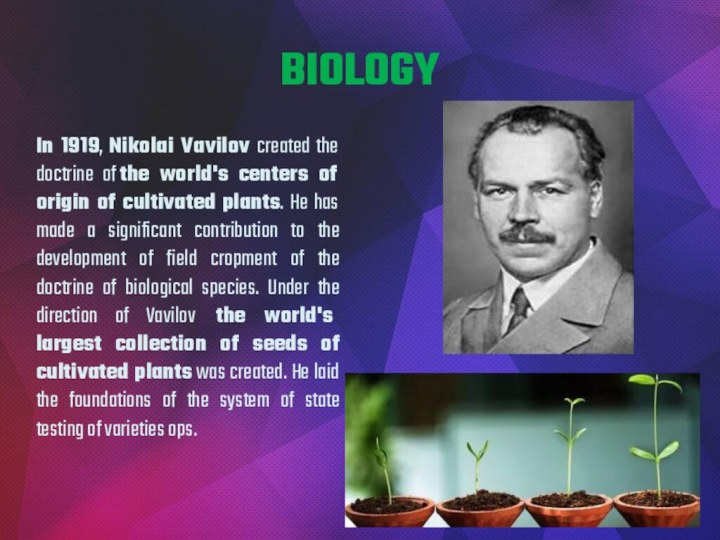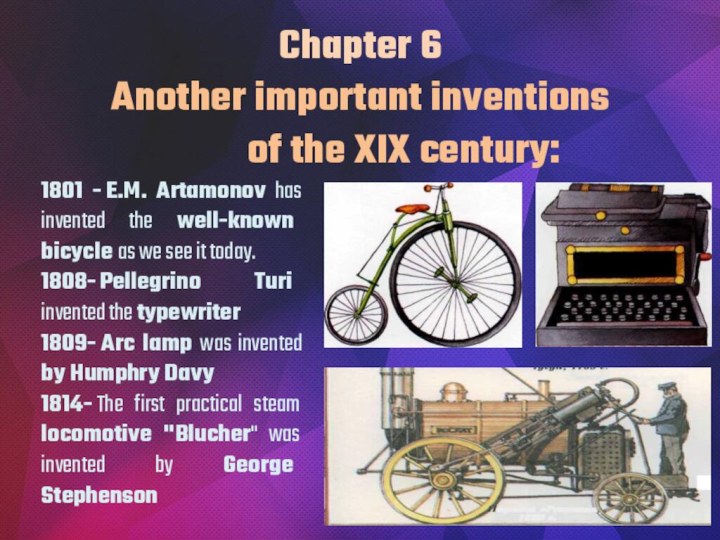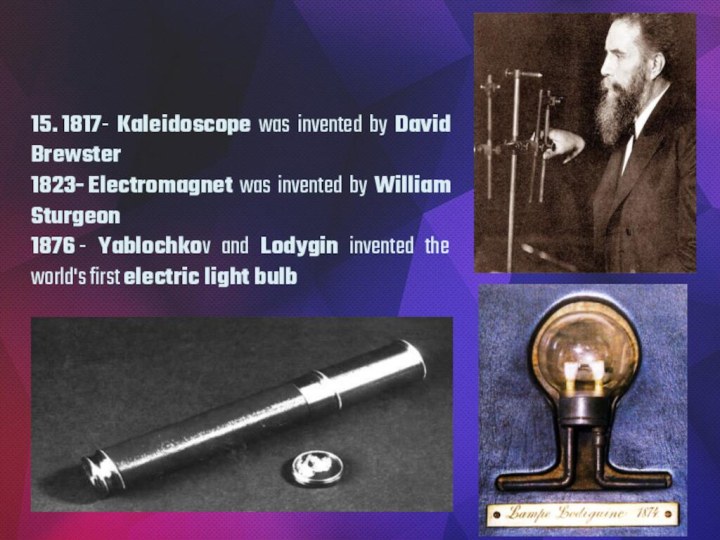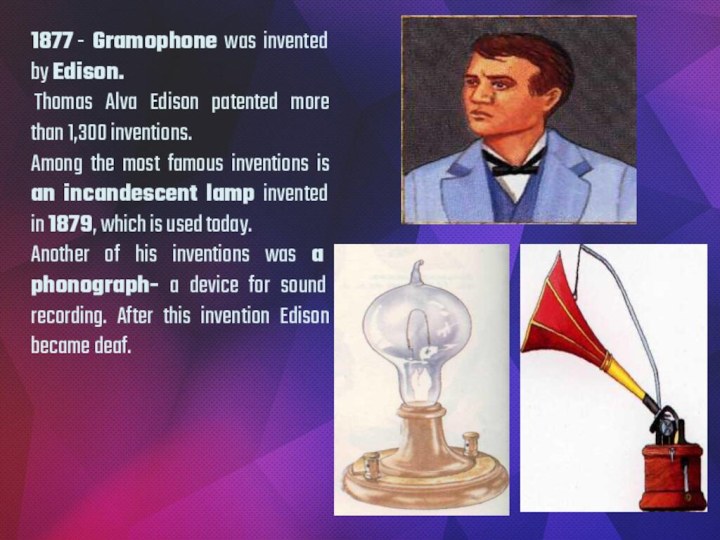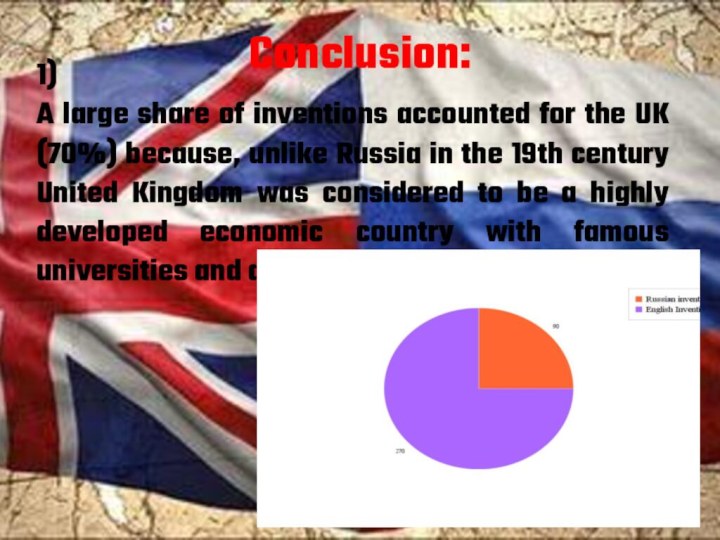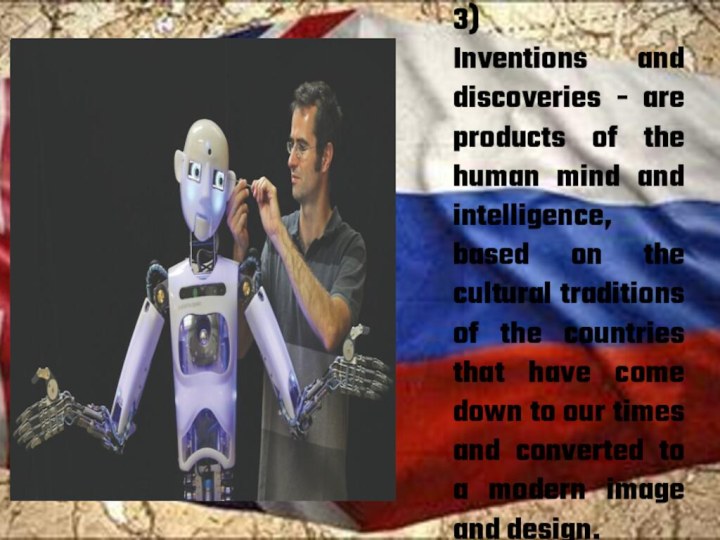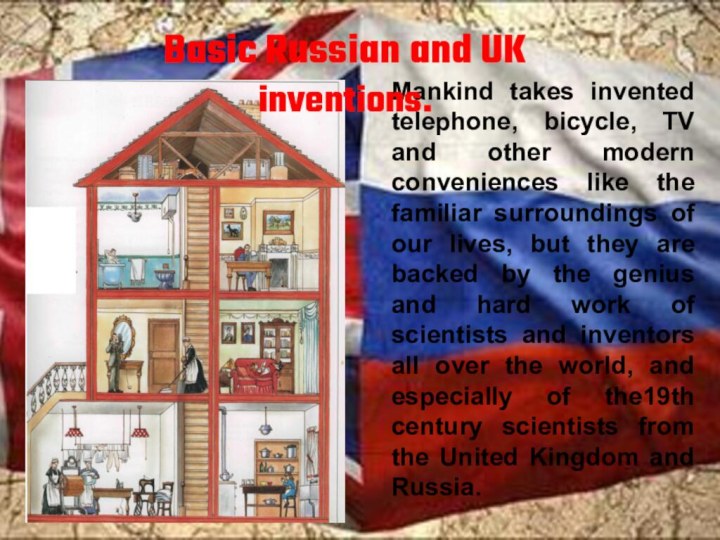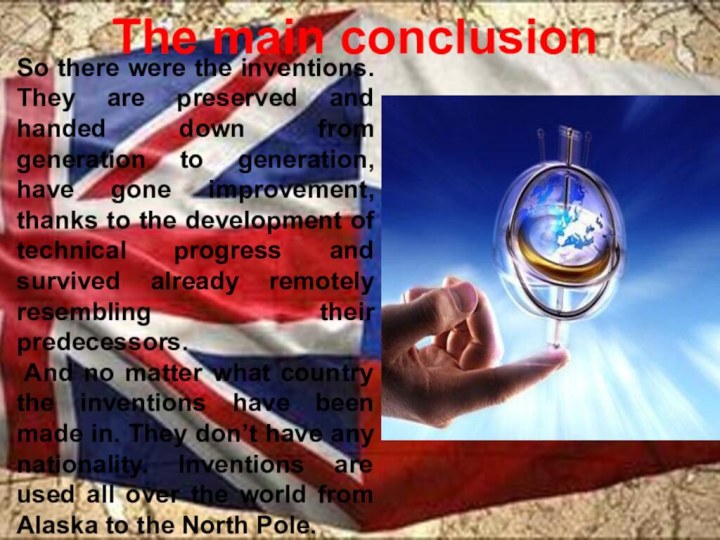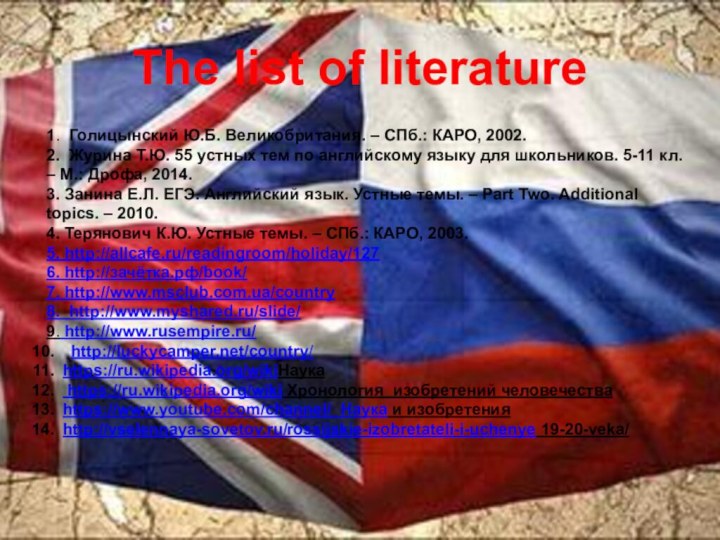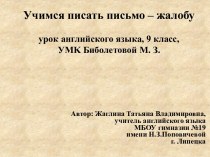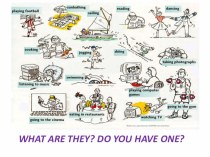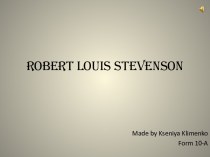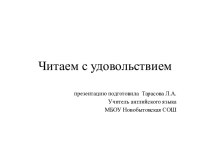Слайд 2
Contents.
Relevances,purposes, tasks.
Introduction
Chapter 1: Transport
Chapter 2: Electricity
Chapter 3: Telephone,
Radio,Television
Chapter 5: Biology
Chapter 6: Another important inventions
Conclusions – comparison
of the foreign and russian inventions
Bibliography
Application
Слайд 3
Relevances:
to study achievements in inventions and discoveries of
science and technology;
to compare the achievements of two countries
to understanding the culture and level of development of these countries and make their comparative analysis
Слайд 4
Purpose:
to consider important inventions and discoveries of the
19th century in Russia and the UK, their role
in
Russian and British society and the world community as a whole.
Слайд 5
Tasks.
- to highlight the most significant inventions in
Russia and the United Kingdom;
- to analyze and systematize
the information of inventions on the sequence of occurrence in the UK and Russia, as well as the reasons for their appearance in two countries and describe the research;
- to translate the research from Russian into English;
- to make a presentation and prepare to speak at the conference
Слайд 6
Introduction
Inventions appeared because of such human qualities as
observation, imagination and faith. Thanks to observation, a person
noticed the relationship of the various phenomena of nature and their impact on people, singled out the characteristics of the surrounding objects, trying to identify and prove scientifically how these or other objects in their invention and / or improvement could serve him, making his life more comfortable.
Слайд 7
Chapter 1.
TRANSPORT
In the first half of the XIX
century, Britain was the workshop of the world. New
machines and tools allowed engineers to build the English advanced machines of all kinds. Materials given by a strong steel industry, and the power of steam engines increased the flow of inventions.
Слайд 8
TRANSPORT
The first who managed to make the rolling on
the tracks steam wagon was a talented British engineer Richard
Trevithick, who by the end of the XVIII century was famous for the creation of light but powerful boilers. In one of the earliest public demonstrations his locomotive successfully drove 10 tons of iron, 5 wagons and 70 men at a distance of 15 km in 4 hours 5 minutes.
Слайд 9
TRANSPORT
The steam engine, created by Richard Trevithick, and
steel rails formed the rail transport. Steamers accelerated the
ocean voyage. Steel bridges were formed through the wide rivers.
Слайд 10
TRANSPORT
In 1763, Russian engineer Ivan Polzunov produced his
own project which was a stationary steam engine of continuous
action. It had two twinned cylinders; one by one filled by steam, and it also supplied water to the tower constantly.
Слайд 11
Chapter 2.
ELECTRICITY
The scientists of the XIX century have
studied the properties of electricity. Inventors found the use
of these works for communication, energy and lighting.
1837, the first electric telegraph was invented by Cook
and Wheatstone. The moving needles coded messages.
Samuel Morse developed the electric telegraph recording messages in Morse code.
In Morse code letters and numbers correspond to the long and short signals: dots and dashes. In 1840 telegraph lines were stretched across Europe and America.
Слайд 13
Chapter 3.
TELEPHONE
The telephone was invented, many believe, by the
British scientist Alexander Graham Bell and patented in 1876.
In 1976, an international non-profit association Institute of Electrical and Electronics Engineers (IEEE) has established the Gold Medal of the Alexander Graham Bell to be awarded for outstanding basic research and applied development communication, which is the highest award of the organization.
Слайд 14
RADIO
Radio grew out of scientific discoveries of James
Clerk Maxwell and Heinrich Hertz. The inventor Guglielmo Marconi
tried to develop "wireless telegraphy". Marconi sent the signal from the hill. The man, who received the signal, confirmed that with a gunshot.
Слайд 15
RADIO
It has been over 100 years since the
invention of the radio by the Russian scientist Alexander Stepanovich Popov
. On the seventh of May 1895 for the first time in the world he made a report for the Scientific and Technical community about the invention of the method the use of electromagnetic waves emitted by the wireless transmission of electrical signals, containing useful information for the recipient, and makes such a transfer in action, getting the information to the receiver. In March 1896, he has demonstrated a device for transmitting signals transmitted over a distance of 250 m radiogram of the two words "Heinrich Hertz". It was the first original model of the radio device.
Слайд 16
TELEVISION
The world's first publicly demonstrated television was invented by
the British inventor John Baird Logue in 1926. Then,
the mechanical television was expelled with developments of Vladimir Zworykin and Phil Farnsworth in the field of electronic television, but the first TV set of Baird was an important step in the development of television.
Слайд 17
Chapter 5.
BIOLOGY
Charles Darwin, the British naturalist , first
proposed the theories of evolution, natural selection and common ancestry in
1871 . After 5 years of traveling around the world, Darwin returned to Britain and became a celebrity in scientific circles. Darwin was honored with numerous awards from the scientific societies, the UK and other European countries.
Слайд 18
BIOLOGY
In 1903, 54-year-old Ivan Pavlov made a report
on higher nervous activity and understanding of the processes of
digestion at the International Medical Congress in Madrid. And in the next, 1904, he became the first Russian Nobel Prize winner for the research of functions of the principal digestive glands.
Слайд 19
BIOLOGY
In 1919, Nikolai Vavilov created the doctrine of the
world's centers of origin of cultivated plants. He has
made a significant contribution to the development of field cropment of the doctrine of biological species. Under the direction of Vavilov the world's largest collection of seeds of cultivated plants was created. He laid the foundations of the system of state testing of varieties ops.
Слайд 20
Chapter 6
Another important inventions
of the XIX century:
1801 - E.M.
Artamonov has invented the well-known bicycle as we see it today.
1808- Pellegrino Turi invented the typewriter
1809- Arc lamp was invented by Humphry Davy
1814- The first practical steam locomotive "Blucher" was invented by George Stephenson
Слайд 21
15. 1817- Kaleidoscope was invented by David Brewster
1823- Electromagnet was
invented by William Sturgeon
1876 - Yablochkov and Lodygin invented the
world's first electric light bulb
Слайд 22
1877 - Gramophone was invented by Edison.
Thomas Alva
Edison patented more than 1,300 inventions.
Among the most famous
inventions is an incandescent lamp invented in 1879, which is used today.
Another of his inventions was a phonograph- a device for sound recording. After this invention Edison became deaf.
Слайд 23
Conclusion:
1)
A large share of inventions accounted for the
UK (70%) because, unlike Russia in the 19th century
United Kingdom was considered to be a highly developed economic country with famous universities and developed science .
Слайд 24
Conclusion:
2)
But despite the different historical development, many important
inventions and discoveries were made practically simultaneously or based
on previous discoveries.
Слайд 25
3)
Inventions and discoveries - are products of the
human mind and intelligence, based on the cultural traditions
of the countries that have come down to our times and converted to a modern image and design.
Слайд 26
Mankind takes invented telephone, bicycle, TV and other
modern conveniences like the familiar surroundings of our lives,
but they are backed by the genius and hard work of scientists and inventors all over the world, and especially of the19th century scientists from the United Kingdom and Russia.
Basic Russian and UK inventions.
Слайд 27
The main conclusion
So there were the inventions. They
are preserved and handed down from generation to generation,
have gone improvement, thanks to the development of technical progress and survived already remotely resembling their predecessors.
And no matter what country the inventions have been made in. They don’t have any nationality. Inventions are used all over the world from Alaska to the North Pole.
Слайд 28
The list of literature
1. Голицынский Ю.Б. Великобритания. –
СПб.: КАРО, 2002.
2. Журина Т.Ю. 55 устных тем по
английскому языку для школьников. 5-11 кл. – М.: Дрофа, 2014.
3. Занина Е.Л. ЕГЭ. Английский язык. Устные темы. – Part Two. Additional topics. – 2010.
4. Терянович К.Ю. Устные темы. – СПб.: КАРО, 2003.
5. http://allcafe.ru/readingroom/holiday/127
6. http://зачётка.рф/book/
7. http://www.msclub.com.ua/country
8. http://www.myshared.ru/slide/
9. http://www.rusempire.ru/
http://luckycamper.net/country/
https://ru.wikipedia.org/wikiНаука
https://ru.wikipedia.org/wiki Хронология изобретений человечества
https://www.youtube.com/channel/ Наука и изобретения
http://vselennaya-sovetov.ru/rossijskie-izobretateli-i-uchenye 19-20-veka/
